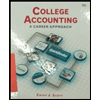Match each definition with its related term by selecting the appropriate term in the dropdown provided. There should be only one definition per term (that is, there are more definitions than terms). Note: Select "None of these are correct" if there is no Term for the "Definition". Definition Term A. Report the long life of a company in shorter periods. B. Record expenses in the same time period as incurred in earning revenue. C. The time it takes to purchase goods or services from suppliers, sell goods or services to customers, and collect cash from customers. D. Record revenues when earned and expenses when incurred. E. Result primarily from the disposal of assets for more than their cost minus the amount of cost depreciated in the past. F. An asset account used to record cash paid before expenses have been incurred. G. Revenues are recognized when the company transfers promised goods or services to customers in the amount it expects to receive. H. Result primarily from the disposal of assets for less than their cost minus the amount of cost depreciated in the past. I. Record revenues when received and expenses when paid. J. The income statement equation. K. The costs of operating the business that are incurred to generate revenues during the period. L. The retained earnings equation. M. A liability account used to record cash received before revenues have been earned. Operating cycle Accrual basis accounting Prepaid expenses Cash basis accounting Revenues - Expenses Net Income Ending Retained Earnings Beginning Retained Earnings + Net Income - Dividends Declared Unearned revenue
Match each definition with its related term by selecting the appropriate term in the dropdown provided. There should be only one definition per term (that is, there are more definitions than terms). Note: Select "None of these are correct" if there is no Term for the "Definition". Definition Term A. Report the long life of a company in shorter periods. B. Record expenses in the same time period as incurred in earning revenue. C. The time it takes to purchase goods or services from suppliers, sell goods or services to customers, and collect cash from customers. D. Record revenues when earned and expenses when incurred. E. Result primarily from the disposal of assets for more than their cost minus the amount of cost depreciated in the past. F. An asset account used to record cash paid before expenses have been incurred. G. Revenues are recognized when the company transfers promised goods or services to customers in the amount it expects to receive. H. Result primarily from the disposal of assets for less than their cost minus the amount of cost depreciated in the past. I. Record revenues when received and expenses when paid. J. The income statement equation. K. The costs of operating the business that are incurred to generate revenues during the period. L. The retained earnings equation. M. A liability account used to record cash received before revenues have been earned. Operating cycle Accrual basis accounting Prepaid expenses Cash basis accounting Revenues - Expenses Net Income Ending Retained Earnings Beginning Retained Earnings + Net Income - Dividends Declared Unearned revenue
Chapter3: Analyzing And Recording Transactions
Section: Chapter Questions
Problem 2MC: That companies can present useful information in shorter time periods such as years, quarters, or...
Related questions
Question

Transcribed Image Text:Match each definition with its related term by selecting the appropriate term in the dropdown provided. There should be only one
definition per term (that is, there are more definitions than terms).
Note: Select "None of these are correct" if there is no Term for the "Definition".
Definition
Term
A. Report the long life of a company in shorter periods.
B. Record expenses in the same time period as incurred in earning revenue.
C. The time it takes to purchase goods or services from suppliers, sell goods or services to
customers, and collect cash from customers.
D. Record revenues when earned and expenses when incurred.
E. Result primarily from the disposal of assets for more than their cost minus the amount of
cost depreciated in the past.
F. An asset account used to record cash paid before expenses have been incurred.
G. Revenues are recognized when the company transfers promised goods or services to
customers in the amount it expects to receive.
H. Result primarily from the disposal of assets for less than their cost minus the amount of
cost depreciated in the past.
I. Record revenues when received and expenses when paid.
J. The income statement equation.
K. The costs of operating the business that are incurred to generate revenues during the
period.
L. The retained earnings equation.
M. A liability account used to record cash received before revenues have been earned.
Operating cycle
Accrual basis accounting
Prepaid expenses
Cash basis accounting
Revenues - Expenses Net Income
Ending Retained Earnings Beginning Retained
Earnings + Net Income - Dividends Declared
Unearned revenue
Expert Solution
This question has been solved!
Explore an expertly crafted, step-by-step solution for a thorough understanding of key concepts.
Step by step
Solved in 2 steps with 1 images

Recommended textbooks for you

Principles of Accounting Volume 1
Accounting
ISBN:
9781947172685
Author:
OpenStax
Publisher:
OpenStax College

College Accounting (Book Only): A Career Approach
Accounting
ISBN:
9781305084087
Author:
Cathy J. Scott
Publisher:
Cengage Learning

College Accounting (Book Only): A Career Approach
Accounting
ISBN:
9781337280570
Author:
Scott, Cathy J.
Publisher:
South-Western College Pub

Principles of Accounting Volume 1
Accounting
ISBN:
9781947172685
Author:
OpenStax
Publisher:
OpenStax College

College Accounting (Book Only): A Career Approach
Accounting
ISBN:
9781305084087
Author:
Cathy J. Scott
Publisher:
Cengage Learning

College Accounting (Book Only): A Career Approach
Accounting
ISBN:
9781337280570
Author:
Scott, Cathy J.
Publisher:
South-Western College Pub

Principles of Accounting Volume 2
Accounting
ISBN:
9781947172609
Author:
OpenStax
Publisher:
OpenStax College